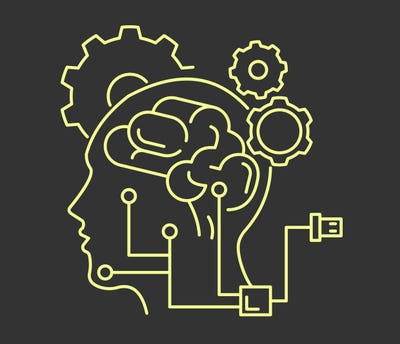There are countless more examples of revolutionary changes in the gaming industry that have happened just over the past two decades. All of them point to the same conclusion: as technology grows and evolves, the gaming industry evolves with it
February 26, 2020

by Limarc Ambalina
With Fortnite, developer Epic Games didn’t just create an internationally acclaimed game; they built a new virtual space for socializing. With the PlayStation VR, Sony released the first mass-market console that allowed us to experience high-definition virtual reality in the comfort of our living room.
There are countless more examples of revolutionary changes in the gaming industry that have happened just over the past two decades.
All of them point to the same conclusion: as technology grows and evolves, the gaming industry evolves with it.
The next big evolution in gaming is going to come from one of the most revolutionary technologies of our time: artificial intelligence. This article will explain how AI is already changing the video game industry and how it is going to strongly affect the industry in years to come.
Augmented reality and mixed reality
In my childhood, road trips were spent in the back of the car, positioning my Game Boy at awkward angles, so the sun could illuminate the screen enough for me to play it. Fast forward ten years, and now we have backlit 3D game consoles and cellphones with the ability to run augmented reality games and mobile apps.

Microsoft HoloLens - image via news.microsoft.com
With a few taps of the screen, we can change the colors of the world around us, creating a new world, an augmented world, through the screens of our mobile devices. This is not something new; the world-famous Pokémon Go was the first game to break augmented reality (AR) into the mainstream, allowing fans both old and new to relish in a long-beloved series. However, none of this would’ve been possible without the breakthroughs in AI and computer vision.
Computer vision
Have you ever wondered how the photo filters in social media apps place images like bunny ears in perfect positions above your head? In Pokémon Go, how does the game place Pokémon upright on the ground instead of 10 feet in the air? The answer is computer vision.

image via lionbridge.ai
Computer vision is the area of AI that seeks to give machines the ability to see the world the way humans do and react to that visual information appropriately. Through facial recognition, we have taught machines how to recognize and distinguish between different faces. With this technology, computers can scan our faces and use our likeness to create in-game avatars.
Plane detection
Computer vision models are also used to detect planes or flat surfaces in natural environments. By detecting planes such as the side of a building, walls, or the ground, the AR application will understand where it can and can’t place digital objects, such as the Pokémon in Pokémon Go.
Object recognition
With the emergence of mixed reality (MR) technology like the Microsoft HoloLens, games are utilizing object recognition in amazing ways. One of the most popular MR games, Young Conker, uses object recognition to detect furniture in the room that it is being played in. By detecting furniture, the game can create a unique playable area for each room. The game then uses the detected furniture as a playable area for Conker to jump on.
With the success of Pokémon Go and Dragon Quest Walk, as well as the mounting anticipation of the ambitious Minecraft Earth, we may see an even larger rise in the popularity of AR and MR games in the near future.
Synthetic media
The biggest and in my opinion, most inevitable, change in the gaming industry is likely going to come from the development of synthetic media.
What is synthetic media?
Synthetic media refers to media (images, video, audio, text) that has been created artificially. For example, if you wanted to shoot a commercial with Barack Obama, what would you do? You’d likely have to get in touch with his PR manager, hire a scriptwriter and production crew, find a set, and film the commercial. The artificial or synthetic media approach would eliminate a large percentage of that workflow.
To create a synthetic commercial, you could use deepfake technology, which is an AI technology capable of mimicking another person’s voice and face with incredible accuracy. Using this technology, you could create a video with the likeness and voice of another person, which is exactly what BuzzFeed did in the video below.

Using synthetic voices in video games
In the video game industry, this technology could be easily applied to generate voice acting for in-game dialogue. Companies like Replica Studios and Lyrebird are already developing synthetic voice technologies that you can download and try today. With this technology, game devs could simply type in the dialogue text, choose an emotion that matches the scene and generate an audio clip with that piece of dialogue vocalized. As a result, synthetic audio could eliminate the time and cost of traditional voice-over recordings.
Furthermore, the voice actors could potentially benefit from this as well. In a recent interview, Replica studios stated that they were creating a marketplace of voices where voice actors could record and license their voices for studios to use. While studios could cut costs around hiring voice actors, the actors themselves could also make money by licensing their voices to multiple studios at the same time.

If the technology reaches a point where it can accurately mimic nuanced emotion, we could see a major revolution in the way voice acting is done in the gaming industry.
Generative neural networks
With the recent release of Open AI’s GPT-2, generative neural networks and synthetic media technology are gaining more and more media coverage. One of the biggest breakthroughs in natural language processing, Open AI’s GPT-2 has the ability to generate natural-sounding text in seconds. This technology has incredible capacity to create unique dialogue for video games on the fly.
One company has already used GPT-2 to create a never-ending text adventure game, AI Dungeon.
A lot of the media around AI seems to be generating a fear of the technology. While AI-powered automation does pose a risk to human employment rates, there is a lot of good that can come from this technology as well.
If the video game industry is to enter an era of augmentation and synthetic media, it should do so with an open mind.
Limarc Ambalina is a Tokyo-based writer specializing in AI, tech, and pop culture. He has written for numerous publications including Hacker Noon, Japan Today, and Towards Data Science.
About the Author(s)
You May Also Like


.jpg?width=700&auto=webp&quality=80&disable=upscale)
.jpg?width=700&auto=webp&quality=80&disable=upscale)
.jpg?width=700&auto=webp&quality=80&disable=upscale)



.jpg?width=300&auto=webp&quality=80&disable=upscale)
